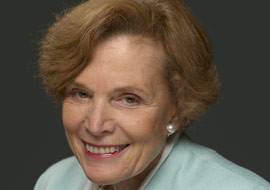As I drive down the crowded LA freeway this evening, I will consider these facts:
According to a fairly recent study, California’s costly dependence on faraway coal-fired plants in Arizona and Utah results in an estimated 67 million tons of global-warming carbon–“the global warming pollution emanating from these smokestacks is equivalent to the emissions from more than 11 million cars and cancels out the reductions to be achieved by California’s landmark global-warming standards for motor vehicles and its current renewable portfolio standard.”
Like 11 million cars on the LA freeway.
Enter LA Mayor Antonio Villaraigosa, who has recently proposed a groundbreaking green jobs andclean energy transition initiative (and utilities rate hike) that will begin the process of pulling the plug on LA’s dependence (over 40 percent of its electricity) on dirty and costly coal, and set the foundation for renewable energy and energy efficiency investments to place his city in the forefront of the jobs-creating clean energy revolution.
In 1947, Los Angeles was the first in the nation to create an Air Pollution Control District. Now LA has set its sights on taking the steps to lead the nation once again.
“For Los Angeles to be the cleanest, greenest city, we need participation from every Angeleno,” Villaraigosa hailed this week. “By investing in renewables and energy efficiency, we are building the foundation for an emerging industry that will attract good paying green-collar jobs to Los Angeles.”
Villaraigosa’s initiative, which has been hotly debated in this LA city council this week, will fast-track the creation of an estimated 18,000 green jobs over a decade, and create a Renewable Energy and Efficiency Trust Fund to retrofit homes and businesses through energy efficiency program, which will ultimately save Angelenos millions of dollars in energy costs. The initiative would also help to jumpstart solar businesses in LA, and provide more solar manufacturing solar equipment, installation and maintenance funds.
Most important, Villaraigosa’s initiative’s recognizes the massive and largely overlooked costs of dirty coal on his local constituents–and the nation–and the need to move to a coal-free future.
Last year, Villaraigosa placed LA in the forefront of the clean energy movement when he called outLA’s dirty secret of coal dependence–Los Angeles burns 12,000 tons of dirty coal to generate electricity daily–and made an announcement of his intentions to move the city toward a coal-free future by 2020.
Here’s the truth: Coal kills. While the city council debates the clean energy initiative this week, the rest of the coalfields in America celebrated the 40th anniversary of Coal Mine Health and Safety Act of 1969, and the sobering reality that three American coal miners still die daily from black lung disease.
Over 104,000 Americans have died in coal-mining accidents; 10,000 coal miners have died from black-lung disease in the last decade. Millions of acres of forests and farmlands have been strip-mined into oblivion; pioneering communities have been plundered. Half of Americans live within an hour of a toxic coal ash dump. The Physicians for Social Responsibility recently found that coal “contributes to four of the top five causes of mortality in the U.S. and is responsible for increasing the incidence of major diseases.”
As a Western Resource Advocates report found, the coal generated by LA and California consumption results in some of the highest emissions of deadly amounts of mercury, nitrogen oxide and sulfur dioxide pollution in the nation, uses up desperately needed and costly water, devastating the quality of life in the Four Corners area of Arizona and Utah.
Deadly, and costly.
The National Academy of Scientists recently totaled costs of coal at more than $62 billion (in California and nationwide tax dollars) in “external damages” to our health and lives.
For LA and its consumers, those cost will ultimately be reflected in higher utility rates if the city remains on coal, given the reality of forthcoming federal environmental regulations and fees on mercury, ozone and coal ash rules.
As Chrissy Scarborough, a Sierra Club Regional Conservation Organizer with the LA Beyond Coal Campaign, notes:
“Every day this city powers itself by burning 12000 tons of coal, releasing toxic mercury, arsenic, lead, nitrous oxide, and sulphur dioxide into the air. We export our jobs, money and pollution to out of state coal-plants. We cannot continue with the status quo – buying dirty coal, polluting Navajo and Hopi Land where our coal is mined and burned, and using over 18 billion gallons of water a year to cool these two coals plants.
“Over the last few months this city has been waking up to the fact that we are powered by coal. The Sierra Club has done outreach in community groups, campuses, and in public spaces. We have gathered over 30 signatures in support of this effort. We have talked to political clubs, faith organizations, and student governments – and the overwhelming response is shock that our city is powered by
dirty and dangerous coal – and demand that we do something about this.”


